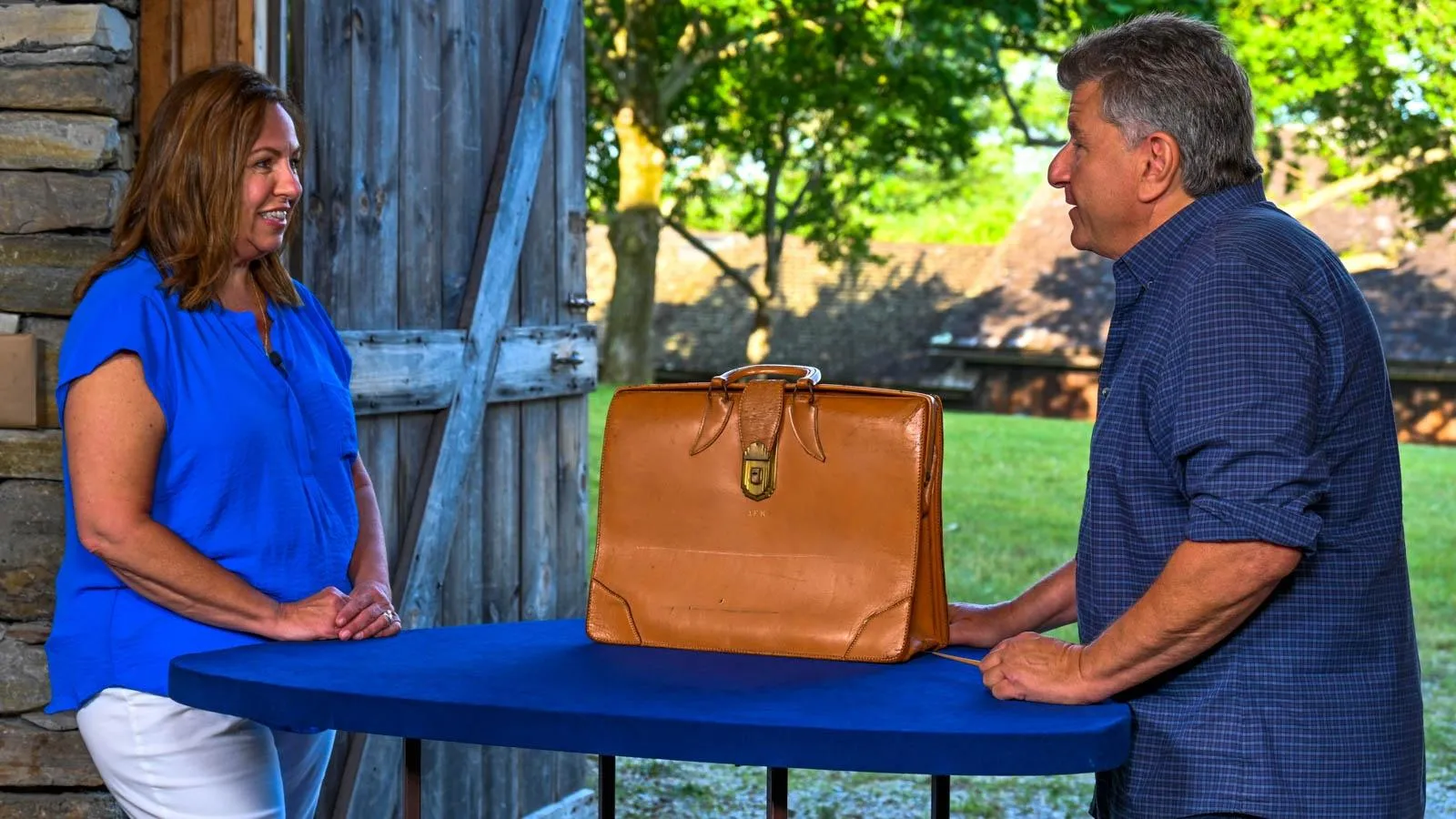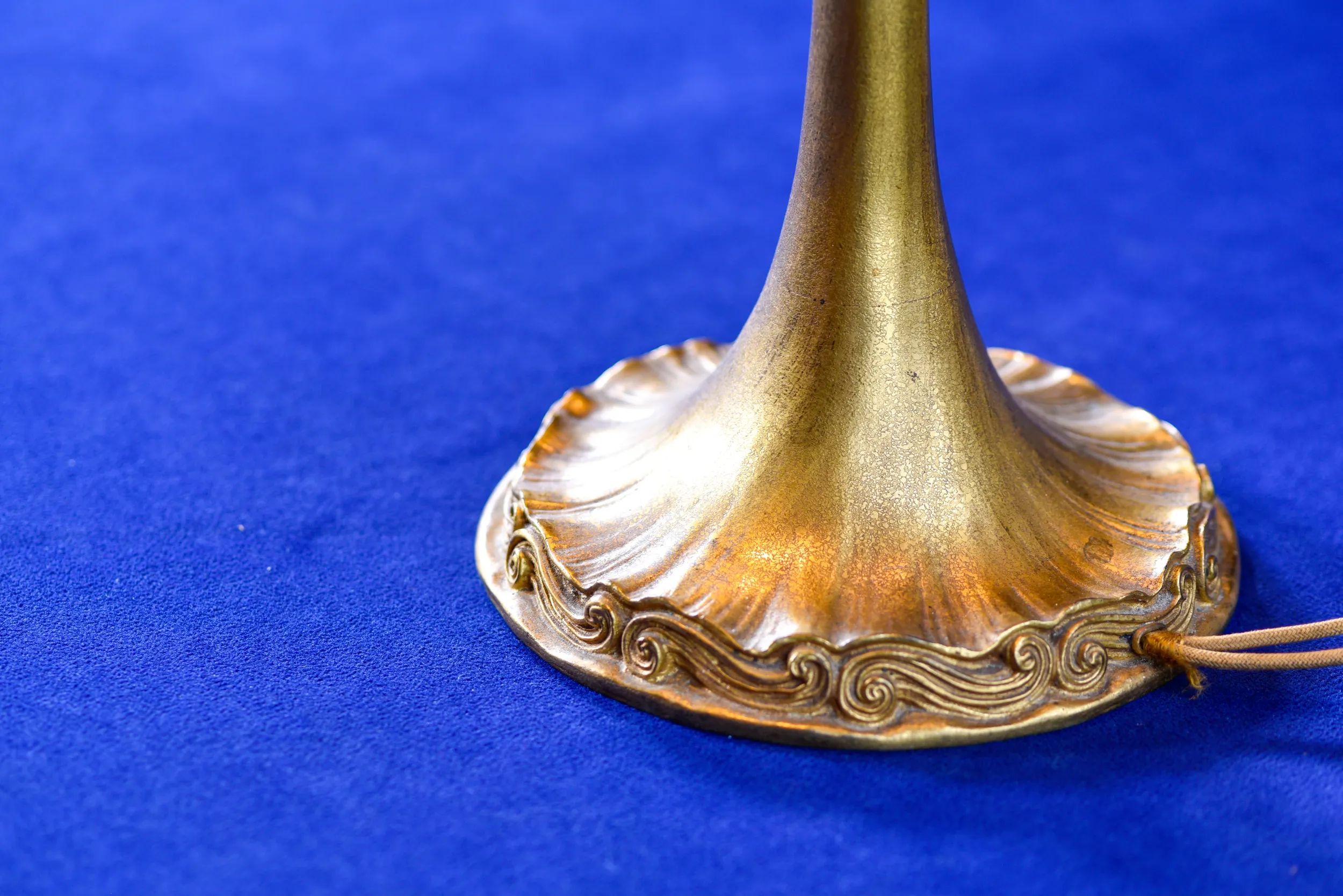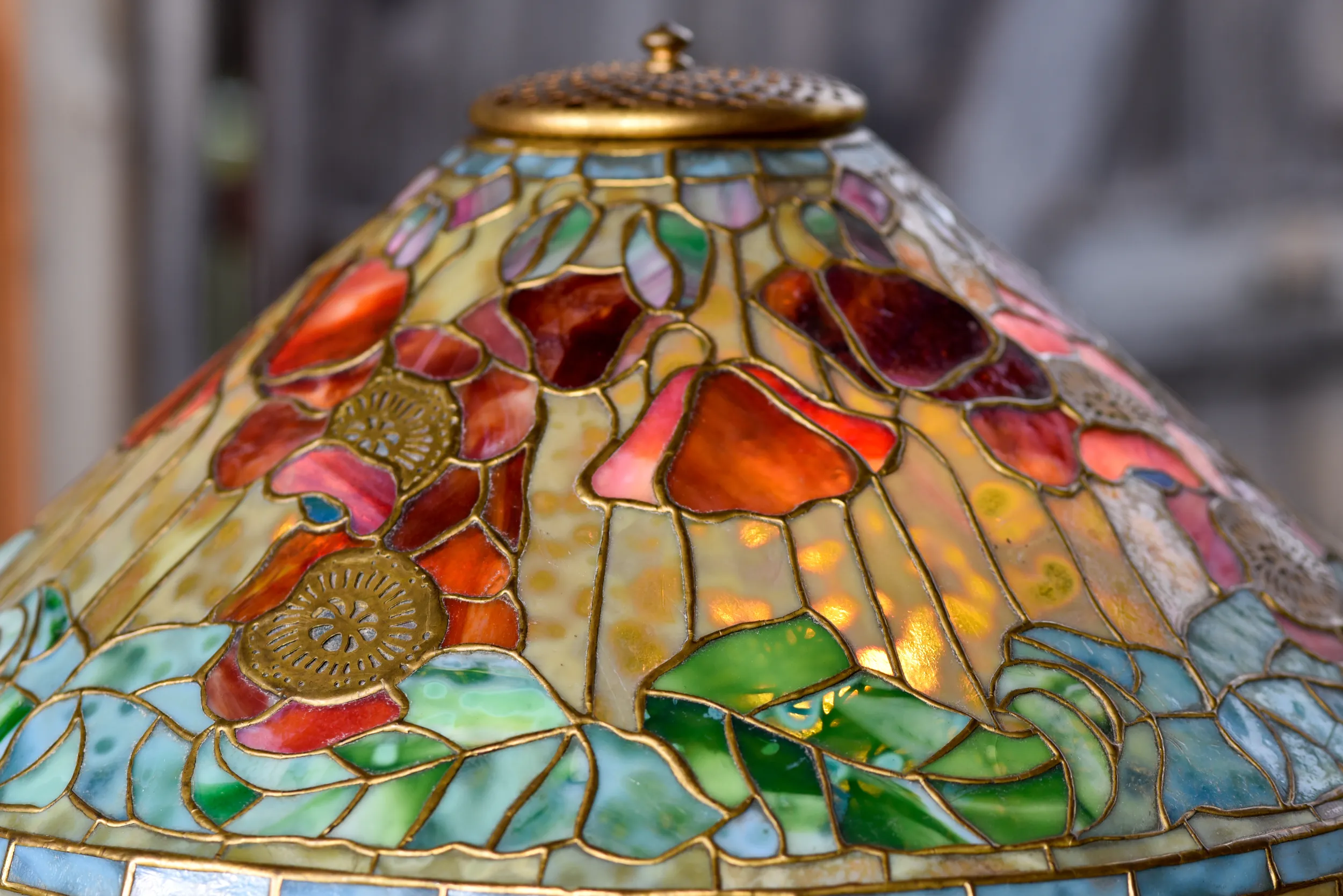GUEST: My brother received a phone call from a lawyer, and the lawyer said our half-sister Phyllis had passed and left her estate to my brother, my sister, and myself. She lived in Sedona, Arizona, so, um, I was the one that went to Arizona and went to the house. And then I went into the bedroom, and on her side table was this lamp. (chuckles) So I knew immediately that it was pretty special. And we found markings for Tiffany and Company.
APPRAISER: So the poppy was a very popular design, and it did come in a number of different, uh, sizes and shapes. Th, this is what they would call the 20-inch cone.
GUEST: All right.
APPRAISER: And th, this was first introduced in their 1906 catalogue as poppy cone. It was sold by itself, um, and, and actually, when you went to Tiffany Studios in 1906, uh, you could pick your own shade and your own base. And...
GUEST: Oh, they weren't a, a pair.
APPRAISER: No, they... Well, there were certain lamps that were only sold as single units, but something like this would be, you'd pick the shade and the base yourself.
GUEST: Shade and the base, okay.
APPRAISER: And what Tiffany realized very early on is that people have different budgets and different tastes, and so that gave them an opportunity to make the pairing that they wanted if they went there.
GUEST: Mm-hmm.
APPRAISER: Um, what's interesting, though, is, your base was not made in 1906.
GUEST: Huh.
APPRAISER: Your base doesn't appear in the Tiffany catalogue until 1910, and then again in 1913, and the shade was still in there.
GUEST: Mm-hmm.
APPRAISER: Um, so that it, this, in all likelihood, I do think that these two came together...
GUEST: All right.
APPRAISER: ...uh, for a very specific reason, um, the... Well, two reasons-- one, the g, gilded finish that you see. Um, also the way the shade is signed, because the interior of the shade says "Tiffany Studios N.Y." and then the corresponding number that you would see in the catalogue.
GUEST: Right.
APPRAISER: Well, they didn't sign those that way until after 1910 going forward, so that would have put this shade...
GUEST: Shade...
APPRAISER: ...with that base.
GUEST: ...with the base.
APPRAISER: So, at the time, the shade would have cost, uh, by itself, $115...
GUEST: Mm-hmm.
APPRAISER: ...and the base would have cost $45.
GUEST: All right.
APPRAISER: which is not an insignificant amount of money.
GUEST: Right, at that time period.
APPRAISER: Tiffany actually put a gilded finish on these bases with 24-karat gold, so this is very expensive.
GUEST: Oh.
APPRAISER: And because it was expensive, right from the get-go, there was an additional 25% on top of the price of the lamp.
GUEST: 25%?
APPRAISER: So this lamp would have actually cost $200. All the parts are, are original with the exception of the sockets, and back then, it was more important that the lamp worked.
GUEST: Okay.
APPRAISER: But collectors today want the original parts. So in today's market, um, I would put an auction estimate of $70,000 to $90,000 on this lamp.
GUEST: Oh! Very nice.
APPRAISER: And, uh, it's, it's really a really fine example.













